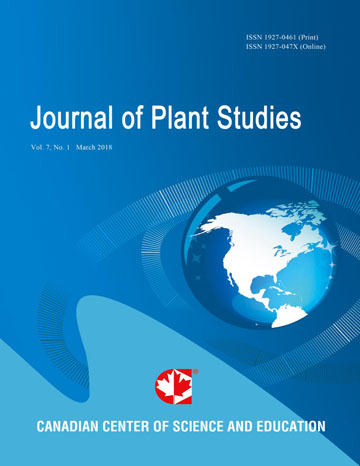Microsporogenesis and Microgemetogenesis in a Cryptoviviparous Mangrove Species- Aegiceras corniculatum (L.) Blanco
- Pandey R.
- Pandey N.
Abstract
Owing to the special feature-vivipary-most of the embryological studies on mangroves pertain to megasporogenesis, megagametogenesis and post fertilization developments. The mircosporogenesis and microgemetogenesis aspects are largely remained unexamined for mangroves. The present work examines microsporogenesis and microgemetogenesis of a cryptoviviparous mangrove species-Aegiceras corniculatum (L) Blanco- (Myrsinaceae). The present work was based on the assumption that morphological features are, in fact, manifestation of the histological developmental processes. Thus, morphologically distinct developmental stages of buds were selected and examined through microtomy technique using light microscope and they have shown distinct developmental stages of stamen and/or pollen grains. The anthers are tetrasporangiate and septate (multillocetale). The three layers of microsporangium i.e. endothecium, middle layer and tapetum are present. The endothecium develops fibrillar thickenings prior to anther dehiscence. In addition to the endothecial cells, other vegetative cells also develop fibrillar thickenings which facilitate anther dehiscence. Tannin content is very high in epidermal layer of anther lobes. Tapetum is secretary type. Meiosis is simultaneous type with tetrahedral type of tetrad. Pollen is bi-nucleated at the time of anther dehiscence.
- Full Text:
 PDF
PDF
- DOI:10.5539/jps.v2n2p53
Index
- AGRICOLA
- CAB Abstracts
- CABI
- CAS (American Chemical Society)
- CNKI Scholar
- Elektronische Zeitschriftenbibliothek (EZB)
- Excellence in Research for Australia (ERA)
- Google Scholar
- JournalTOCs
- Mendeley
- Open policy finder
- Scilit
- Standard Periodical Directory
- Technische Informationsbibliothek (TIB)
- WorldCat
Contact
- Joan LeeEditorial Assistant
- jps@ccsenet.org
